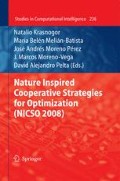Abstract
Communication improves decision-making for group-living animals, especially during foraging, facilitating exploitation of resources. Here we model the trail-based foraging strategy of Pharaoh’s ants to understand the limits and constraints of a specific group foraging strategy. Pharaoh’s ants (Monomorium pharaonis) exploit the geometry of trail networks bifurcations to make U-turns, when walking the wrong way. However, 7% of foragers perform apparently incorrect U-turns. These seemingly maladaptive U-turns are performed by a consistent minority of specialist U-turners that make frequent U-turns on trails and lay trail pheromones with high frequency. Our study shows a key role for U-turning ants in maintaining the connectivity of pheromone trails. We produced an agent-based model of a heterogeneous ant community where 7% of agents were specialised frequent U-turners whilst the remaining 93% rarely U-turned. Simulations showed that heterogeneous colonies enjoyed significantly greater success at foraging for distant food resources compared to behaviourally homogeneous colonies. The presence of a cohort of specialised trail-layers maintains a well-connected network of trails which ensures that food discoveries are rapidly linked back to the nest. This decentralised information transfer ensures that foragers can respond to dynamic changes in food distribution, meaning more individuals benefit by successfully locating food finds.
Access this chapter
Tax calculation will be finalised at checkout
Purchases are for personal use only
Preview
Unable to display preview. Download preview PDF.
References
Acosta, F.J., Lopez, F., Serrano, J.M.: Branching angles of ant trunk trails as an optimization cue. J. Theor. Biol. 160, 297–310 (1993)
Beckers, R., Deneubourg, J.L., Goss, S.: Trails and u-turns in the selection of a path by the ant Lasius niger. J.Theor. Biol. 159, 397–415 (1992)
Beekman, M., Sumpter, D.J.T., Ratnieks, F.L.W.: Phase transition between disordered and ordered foraging in Pharaoh’s ants. P. Natl. Acad. Sci. USA 98, 9703–9706 (2001)
Camazine, S., Deneubourg, J., Franks, N.R., Sneyd, J., Theraulaz, G., Bonabeau, E.: Self-organization in Biological Systems. Princeton University Press, Princeton (2001)
Dall, S.R.X., Giraldeau, L., Olsson, O., McNamara, J.M., Stephens, D.W.: Information and its use by animals in evolutionary ecology. Trends Ecol. Evol. 20, 187–193 (2005)
Danchin, E., Giraldeau, L., Valone, T.J., Wagner, R.H.: Public information: from nosy neighbours to cultural evolution. Science 304, 487–491 (2004)
DeAngelis, D.L., Rose, K.A., Huston, M.A.: Individual-oriented approaches to modelling ecological populations and communities. In: Levin, S.A. (ed.) Front Math. Biol., pp. 390–410. Springer, Berlin (1994)
Dechaume-Moncharmont, F., Dornhaus, A., Houston, A.I., McNamara, J.M., Collins, E.J., Franks, N.R.: The hidden costs of information in collective foraging. P. Roy Soc. B 272, 1689–1695 (2005)
Dorigo, M., Di Caro, G., Gambardella, L.M.: Ant algorithms for discrete optimisation. Artif Life 5, 137–172 (1999)
Edelstein-Keshet, L., Watmough, J., Ermentrout, G.B.: Trail following in ants: individual properties determine population behaviour. Behav. Ecol. Sociobiol. 36, 119–133 (1995)
Ermentrout, G.B., Edelstein-Keshet, L.: Cellular automata approaches to biological modelling. J.Theor. Biol. 160, 97–133 (1993)
Fahse, L., Wissel, C., Grimm, V.: Reconciling classical and individual-based approaches in theoretical population ecology. Am. Nat. 152, 838–852 (1998)
Fourcassié, V., Deneubourg, J.L.: The dynamics of collective exploration and trail-formation in Monomorium pharaonis: experiments and model. Physiol. Entomol. 19, 291–300 (1994)
Grimm, V.: Ten years of individual-based modelling in ecology: what have we learned and what could we learn in the future? Ecol. Model. 115, 129–148 (1999)
Hart, A.G., Jackson, D.E.: U-turns on ant trails. Curr. Biol. 16, R42–R43 (2006)
Holcombe, M.: X-machines as a basis for dynamic system specification. Software Eng. J. 3, 69–76 (1988)
Hölldobler, B., Wilson, E.: The Ants. The Belknap Press of Harvard University, Cambridge (1990)
Jackson, D.E., Ratnieks, F.L.W.: Communication in ants. Curr. Biol. 16, 570–574 (2006)
Jackson, D.E., Holcombe, M., Ratnieks, F.L.W.: Trail geometry gives polarity to ant foraging networks. Nature 432, 907–909 (2004)
Jackson, D.E., Martin, S., Holcombe, M., Ratnieks, F.L.W.: Longevity and detection of persistent foraging trails in Pharaoh’s ants, Monomorium pharaonis. Anim. Behav. 71, 351–359 (2006)
Kaiser, H.: The dynamics of populations as a result of the properties of individual animals. Forts Zool 25, 109–136 (1979)
Krause, J., Ruxton, G.D.: Living in groups. Oxford University Press, Oxford (2002)
Krebs, J.R., Davies, N.B.: Behavioural ecology, 4th edn. Blackwell Science, Oxford (1997)
Lugo, A.E., Farnworth, E.G., Pool, D., Jerez, P., Kaufman, G.: The impact of the leaf cutter Atta colombica on the energy flow of a tropical wet forest. Ecology 54, 1292–1301 (1973)
Peacock, A.D., Sudd, J.H., Baxter, A.T.: Studies in Pharaoh’s ant, Monomorium pharaonis II. Dissemination. Entomol. Mag. 91, 130–133 (1955)
Schweitzer, F., Lao, K., Family, F.: Active Random walkers simulate trunk trail formation by ants. Biosystems 41, 153–166 (1997)
Sudd, J.H.: The foraging method of Pharaoh’s ant, Monomorium pharaonis. Anim. Behav. 8, 67–75 (1960)
Solé, R.V., Bonabeau, E., Delgado, J., Fernandez, P., Marin, J.: Pattern formation and optimization in army ant raids. Artif. Life 6, 219–226 (2001)
Vincent, A.D., Myerscough, M.R.: The effect of a non-uniform turning kernel on ant trail morphology. J. Math. Biol. 49, 391–432 (2004)
Ward, P., Zahavi, A.: The importance of certain assemblages of birds as ”information centres” for food finding. IBIS 119, 517–534 (1973)
Wilson, E.O.: Chemical communication among workers of the fire ant, Solenopsis saevissima. I. The organisation of mass foraging. Anim. Behav. 10, 134–164 (1962)
Wilson, E.O.: The insect societies. Belknap Press of Harvard, Cambridge (1971)
Author information
Authors and Affiliations
Editor information
Editors and Affiliations
Rights and permissions
Copyright information
© 2009 Springer-Verlag Berlin Heidelberg
About this chapter
Cite this chapter
Jackson, D.E., Bicak, M., Holcombe, M. (2009). Decentralised Communication and Connectivity in Ant Trail Networks. In: Krasnogor, N., Melián-Batista, M.B., Pérez, J.A.M., Moreno-Vega, J.M., Pelta, D.A. (eds) Nature Inspired Cooperative Strategies for Optimization (NICSO 2008). Studies in Computational Intelligence, vol 236. Springer, Berlin, Heidelberg. https://doi.org/10.1007/978-3-642-03211-0_3
Download citation
DOI: https://doi.org/10.1007/978-3-642-03211-0_3
Publisher Name: Springer, Berlin, Heidelberg
Print ISBN: 978-3-642-03210-3
Online ISBN: 978-3-642-03211-0
eBook Packages: EngineeringEngineering (R0)

